#LC-39B
Text

Apollo 10 (CSM-106/LM-4/SA-505) space vehicle at Pad B, Launch Complex 39, Kennedy Space Center, Florida.
Date: May 13, 1969
NASA ID: S69-34327
#Apollo 10#CSM-106#Charlie Brown#LM-4#Snoopy#Lunar Module#SA-505#Saturn V#Rocket#NASA#Apollo Program#F-type mission#LC-39B#Kennedy Space Center#Florida#May#1969#my post
161 notes
·
View notes
Text

"A ground-level view of Pad B, Launch Complex 39, Kennedy Space Center, Florida, showing the Skylab 3/Saturn IB (CSM-117/SA-207) space vehicle during prelaunch preparations. The launch vehicle is venting liquid oxygen during pre-final countdown cryogenic loading."
Date: July 20, 1973
NASA ID: S73-31697
#Skylab III#Skylab 3#SL-3#SLM-2#CSM-117#SA-207#Saturn IB#Rocket#NASA#Apollo Program#Apollo Applications Program#LC-39B#Kennedy Space Center#Florida#July#1973#my post
15 notes
·
View notes
Video
KSC-20220614-PH-JBS01_0332 by NASA Kennedy
Via Flickr:
A full Moon is in view from Launch Complex 39B at NASA’s Kennedy Space Center in Florida on June 14, 2022. The Artemis I Space Launch System (SLS) and Orion spacecraft, atop the mobile launcher, are being prepared for a wet dress rehearsal to practice timelines and procedures for launch. The first in an increasingly complex series of missions, Artemis I will test SLS and Orion as an integrated system prior to crewed flights to the Moon. Through Artemis, NASA will land the first woman and first person of color on the lunar surface, paving the way for a long-term lunar presence and using the Moon as a steppingstone on the way to Mars. Photo credit: NASA/Ben Smegelsky NASA image use policy. Photo credit: NASA/Ben Smegelsky
1 note
·
View note
Text


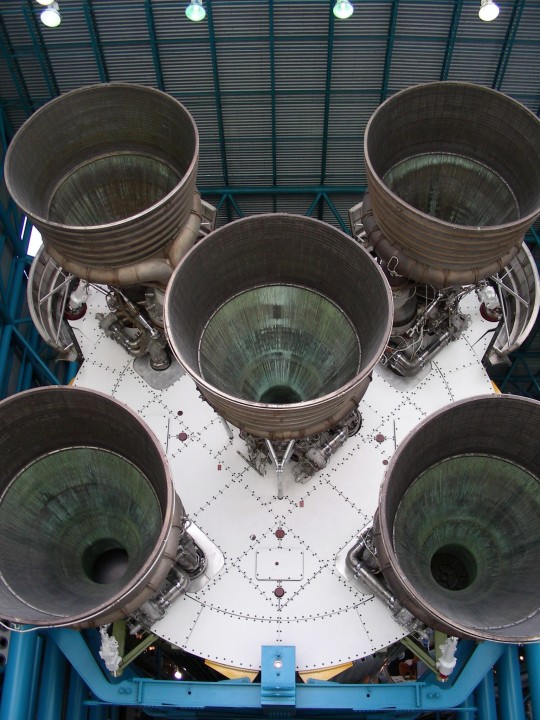
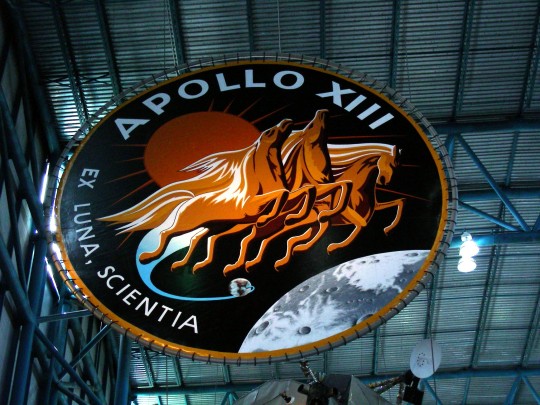
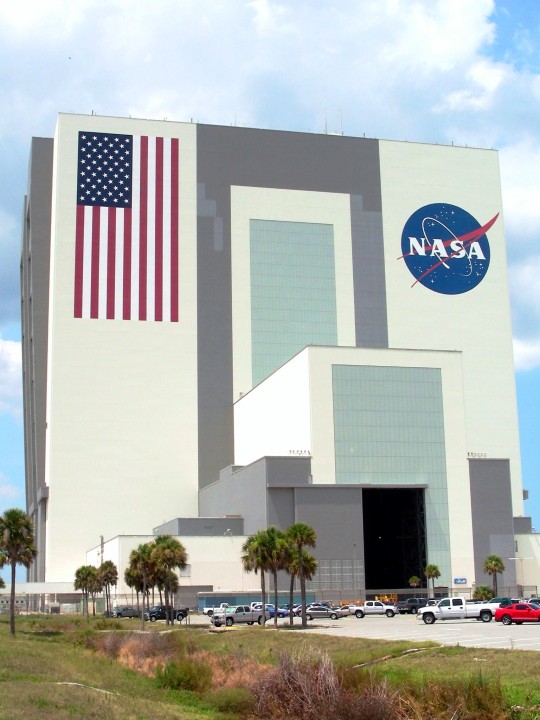
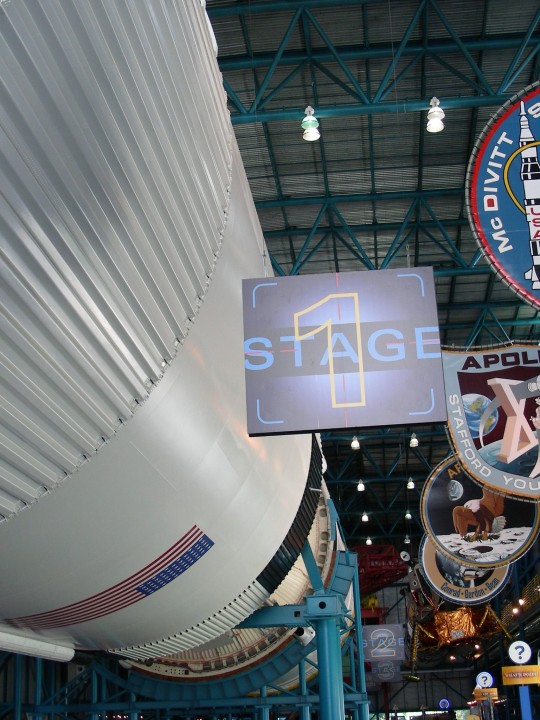
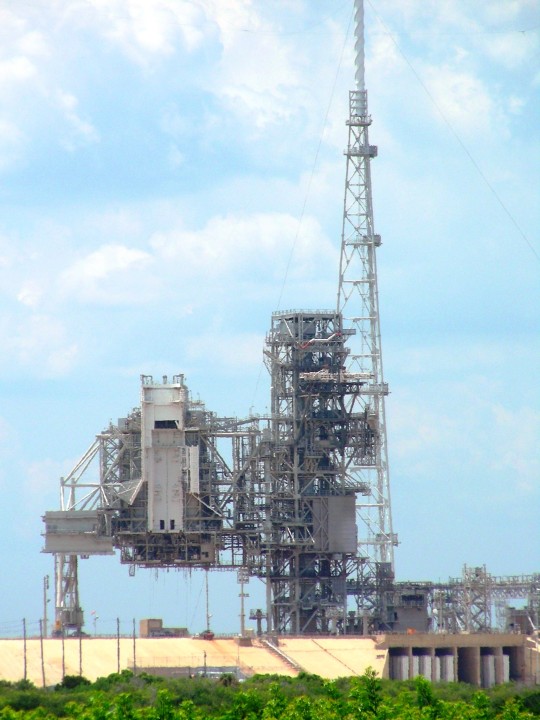




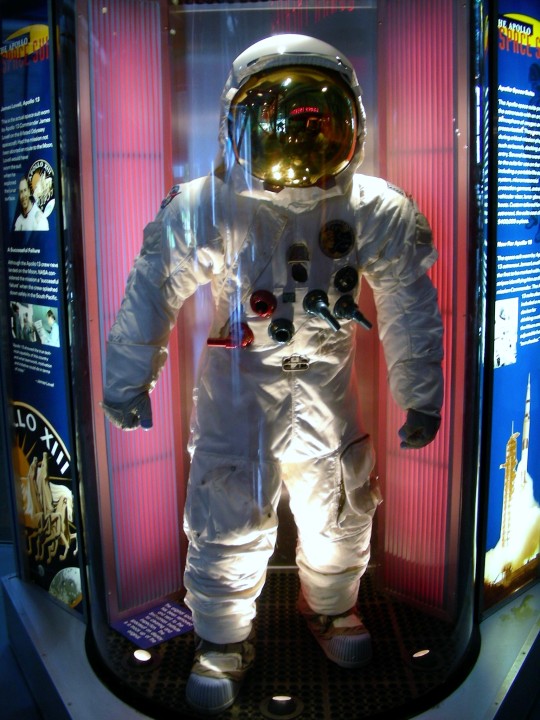

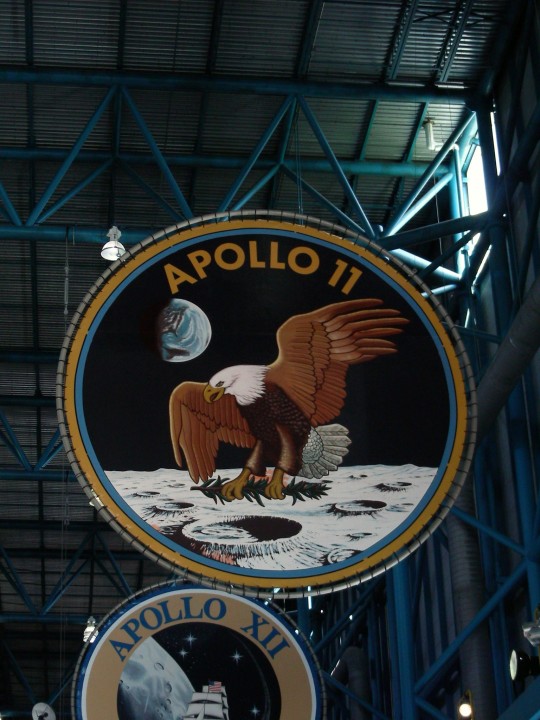
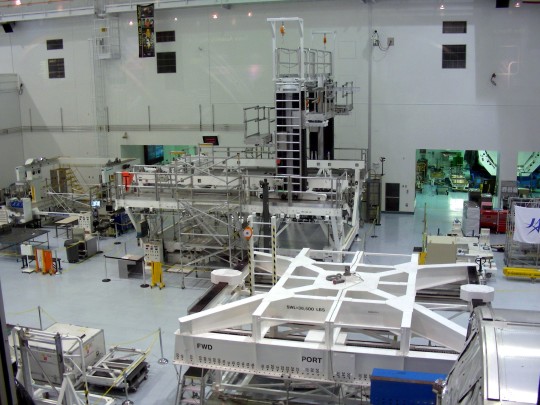

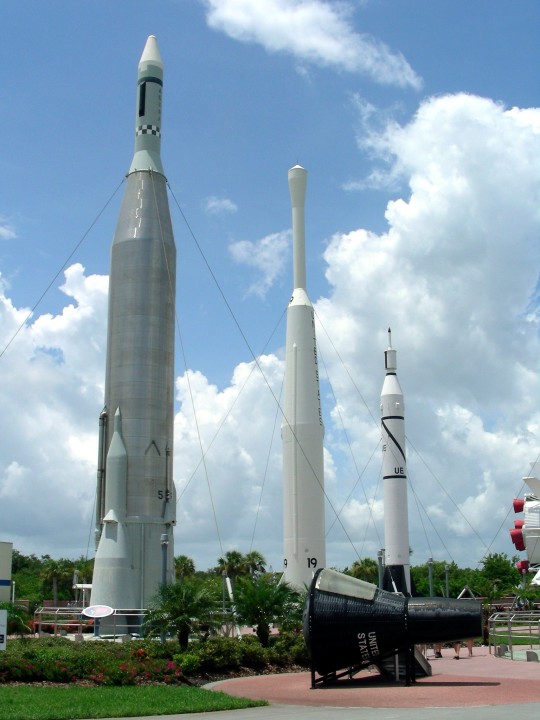


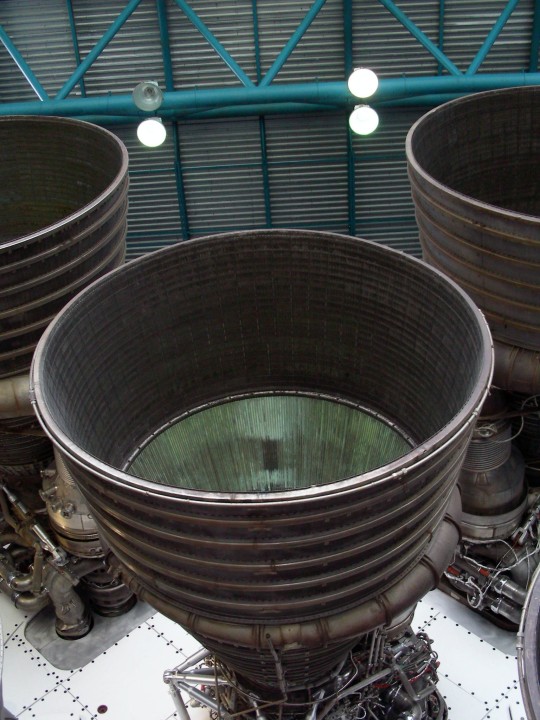
NASA was created to replace NACA on October 1, 1958.
#NASA#created#1 October 1958#anniversary#US history#logo#USA#summer 2009#2010#original photography#Florida#landmark#vacation#travel#tourist attraction#Saturn V moon rocket#interior#exterior#Kennedy Space Center Visitor Complex#Launch Complex 39B (LC-39)#vehicle assembly building#space suit#National Aeronautics and Space Administration#NACA#Apollo 14 Command Module#Launch Complex 39A (LC-39)
229 notes
·
View notes
Text

#Artemis 1 is currently rolling back to the VAB from LC-39B for the second time#but this time after a successful WDR (Wet Dress Rehearsal) or fuelling test and rehearsal countdown on 20 June at the fourth attempt. There#known as the 4 inch LH2 Quick Disconnect (QD)#this line removes hydrogen from the vehicle that has been used to flow through the engines and feed lines to pre-cool them down ready for t#This did not prevent both the Core Stage and ICPS upper stage being fully fuelled#the bleed line was simply closed (since the engines would not be fired during this test countdown). However in order to get the count to co#the Autonomous Launch Sequencer (ALS)#took over at T-33 seconds it could not be fooled in this way. It noticed the bleed line was not open and the engine therefore weren't pre-c#In the VAB the seal on the bleed line will be replaced#and possibly all the rubber bits or 'soft goods' on the other connectors at the same time. Most importantly Artemis will be fitted with its#flight batteries#some avionics swop outs on the upper stage and the Orion spacecraft will be loaded up with some final test payloads. In all some six to eig#The first available launch date is currently 23 August and roll out would take place 10 to 14 days prior to that. Once the FTS ordnance is#giving enough time for three launch attempts. Pic: Artemis 1 begins roll back on early morning 2 July NASA
0 notes
Text

Lightning strikes the LC-39B protection system as preparations for the launch of Artemis I were underway at NASA's Kennedy Space Center in Florida.
(©)
#go for queue deploy#nasa#nasa artemis#nasa orion#nasa sls#space launch system#weather#lightning#storm#space#spaceflight#space exploration#spacecraft#space program#meteorology#rain#thunder#science#exploration#engineering#stem
49 notes
·
View notes
Text

At 1:47 AM on November 16, Artemis I lifted off from LC-39B. With 8.8 million pounds of thrust, it became the most powerful rocket ever successfully flown, lofting the Orion capsule on a month long mission around the moon and back!
📸 me for spacescout.info
derekspace.com
#nasa#artemis#space#rocket#sls#launch#photo#photography#spaceflight#orion#artemis I#space media#photographer#independant#space scout
13 notes
·
View notes
Text

"Back to the Future"
Artemis 1 heading to the Moon from LC-39B, Kennedy Space Center, Florida
https://www.darylgilbertphotography.com/Launches-from-the-Space-Coast/Artemis-1
6 notes
·
View notes
Video
youtube
NASA - SLS & Orion - Artemis I - LC-39B - Kennedy Space Center - Space A...
3 notes
·
View notes
Text
Artemis Program Timelines Pushed To The Right
Artemis-1 on the launch pad at LC-39B at Kennedy Space Center in 2022.Photo: Charles Boyer
NASA announced today that the Artemis program has encountered new delays, causing a shift in the timeline of planned launches.
Artemis-2 is now slated for September 2025, with Artemis-3 now slated for September 2026 according to NASA Administrator Bill Nelson in a news conference held this afternoon. “As…
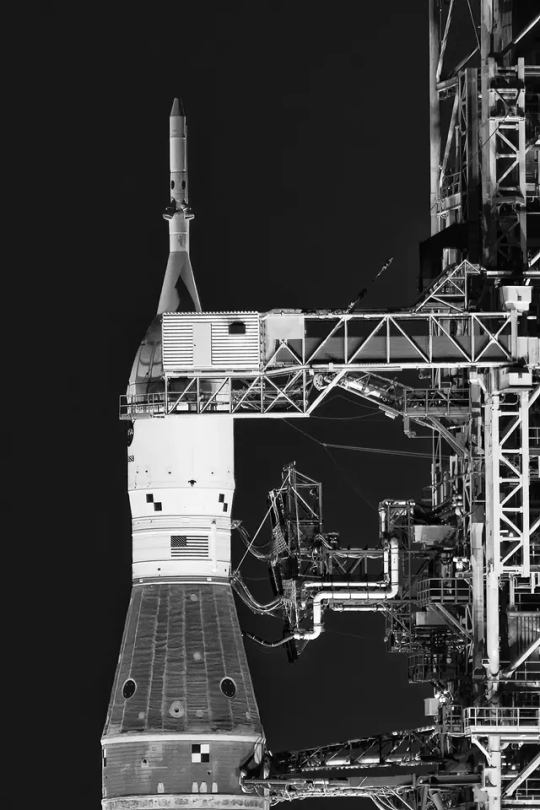
View On WordPress
0 notes
Text
" ... The ASTP Apollo CSM (CSM-111) lifted off on a Saturn IB rocket on 15 July 1975 with astronauts Thomas Stafford, Vance Brand, and Donald Slayton on board. The ASTP Saturn IB, the last rocket of the Saturn family to fly, lifted off from Launch Complex (LC) 39 Pad B, one of two Saturn V pads at Kennedy Space Center, not the LC 34 and LC 37 pads used for Saturn IB launches in the Apollo lunar program. This was because NASA had judged that maintaining the Saturn IB pads for Skylab and ASTP would be too costly. A "pedestal" (nicknamed the "milkstool") raised the Skylab 2, 3, and 4 and ASTP Saturn IB rockets so that they could use the Pad 39B Saturn V umbilicals and crew access arm.
Once in orbit, the ASTP CSM turned and docked with the DM mounted on top of the Saturn IB's second stage. It then withdrew the DM from the stage and set out in pursuit of the Soyuz 19 spacecraft, which had launched about eight hours before the Apollo CSM with cosmonauts Alexei Leonov and Valeri Kubasov on board. The two craft docked on 17 July and undocked for the final time on July 19. Soyuz 19 landed on 21 July. The ASTP Apollo CSM, the last Apollo spacecraft to fly, splashed down near Hawaii on 24 July 1975 — six years to the day after Apollo 11, the first piloted Moon landing mission, returned to Earth.
..."
0 notes
Text

Skylab II Saturn IB (SA-206) rollout to Pad 39B. It was rolled out with the Apollo Facilities Checkout Vehicle (BP-30/SM-05/SLA-10) to test the milkstood modifications to the Mobile Launcher-1.
Date: January 9, 1973
NASA ID: KSC-73PC-0010
#Skylab II#Skylab 2#SL-2#SLM-1#Saturn IB#SA-206#Rocket#NASA#Apollo Program#Apollo Applications Program#Apollo Boilerplate#Boilerplate#BP-30#SM-015#SLA-10#Facilities Checkout Vehicle#LC-39B#Kennedy Space Center#KSC#Florida#January#1973#Mobile Launcher-1#ML-1#my post
45 notes
·
View notes
Text
Chapter 23: Learning to Walk, Part I: Trial by Fire.
(Stevie Nicks, Edge of Seventeen)
Following the successful splashdown of Apollo 31-R, and the recovery of her crew, preparations began for the rollout of Apollo’s successor program’s maiden voyage. The officially-unnamed RS-IC Lifter rocket, alongside its dummy upper stage began the slow trip out to the pad. While the first fully-functional lifter, RS-IC-001 Liberty, had been rolled out to fanfare earlier that year this booster was different. Lacking a cockpit, as well as landing gear, parachutes, and reuse hardware, this booster was destined for but a single use, demonstrating the aerodynamic stability of the Space Transportation System. It was with this mission in mind that a group of engineers, possibly working alongside Boeing, or North American, or Marietta, broke into the VAB and spray painted the unnamed boosters wing. Trial By Fire it read, and it would be one hell of a trial indeed.
Somewhat unamused, NASA continued their plans to roll out the booster for its january 1978 launch window. By new years, the rocket was on the pad, illuminated by the fluorescent lights surrounding the stack. Over the years, LC-39A and LC-39B had received a series of upgrades. These upgrades prepared the two pads to withstand the full thrust of the lifter’s 6 F-1A main engines, as well as integrate more readily with the new crawler-transporters. These changes coincided with the wind-down of Project Apollo, happening silently in its wake, and preparing the cape for a new monolithic rocket to loom on its horizons.
STS-1 was to demonstrate the lifter’s aerodynamics and thermal protection system on a suborbital hop, proving the system ready for Liberty’s maiden voyage. As December became January, and days turned to weeks, the system was facing a number of problems. First, the boosters computers were refusing to cooperate, then the engines were misbehaving. As engineers solved one issue, it seemed two took their place. The launch slipped into February, but before long, pad technicians claimed to have gotten all the gremlins. The rocket began fueling up that morning, preparing for its first and final chance at glory. As it finished fueling its tanks, the countdown entered its final phase, and within minutes the rocket lifted off the pad with a thunderous roar even louder than that of the Soviet’s N1.
Public Affairs Officer: Liftoff, we have a liftoff, 45 minutes past the hour, STS-1 has cleared the tower!
The rocket rose into the heavens, slowly spinning to face its back towards the ground. Once the rocket had performed its roll maneuver, it began slowly pitching over, sending the nearly 500 ton mass simulator up and out over the Atlantic. Just over two minutes after liftoff, the rocket cut its main engines, separating the mass simulator and beginning a slow, pre-programmed, flip over maneuver. The rocket then acted as it would in a real flight, holding this attitude for the duration of its boostback burn, before nosing down towards the Earth below. The lifter was now in space, drifting nearly ninety miles overhead; Before long though it began its descent, punching through the Earth’s atmosphere and beginning its plunge towards the sea.
The heatshield held, and the booster sent back the oh so critical data it had been designed to collect. Without a pilot, however, the vehicle entered an uncontrolled spin at an altitude of 150,000 feet, breaking up before impacting the atlantic below. The vehicle had survived hellfire, but not its own aerodynamics; This however, was more than enough to convince NASA: The design was safe, and all subsequent STS flights would carry crew along to bring the booster back in one piece.
By year's end, STS would see yet another flight. This would be the first of two piloted missions carrying the same mass-simulator upper stage, and demonstrating flawlessly that piloted recovery could be performed. These flights also gave NASA their first look at what a booster coming back from space looked like, and to no one at the agency’s surprise, Liberty held up flawlessly. The booster would perform a second demonstration flight 4 months later, marking its first turnaround, and its second flight to space. Joe Engle, Fred Haise, Richard Truly and Charles Fullerton would all take their turn flying Liberty, gaining them the experience needed to eventually pilot a spacecraft down from orbit.
By 1979, the STS was ready for its first operational testflight. The first S-IIB, consisting of an External Tank and ERD was mated to the launcher, and Liberty began her next rollout to the pad. Her titanium skin was holding up well, easily handling the heat generated by the mach 6 entry she faced, and the supersonic mach 1.3 flight she sustained on her trips back to the KSC. Her jet engines were performing nominally, and as engineers had expected, her F-1A engines were holding up to repeated use flawlessly. Before long Liberty would need an engine refit, however this was still a few flights away; For now, the rocket sat alone on the launchpad, awaiting her crew to deliver the STS’s first orbital mission to space.
Launch Commentator: We are at T-minus ten minutes to flight. We can see Liberty’s six main engines performing their pre-planned gimbal check.
Capcom: Good Gimbal, Four-
Haise: Roger that.
Launch Commentator: We have a good gimbal check here at T-minus eight minutes to liftoff.
If you turned off the mundane chatter of mission controllers, astronauts and commentators you would be hard pressed to determine that the vehicle was a new system. STS was performing near-flawlessly, and had been for multiple flights. Liberty proved to be a much less temperable beast than many had feared; This leaving few with doubts that this Saturn-derived lifter could perform its design-minimum of 8 flights per year. If all went well, the lifters were to be capable of nearly a dozen flights a year, if not more. This goal was still many years out, but NASA was quickly learning which repairs and refurbishments were necessary, and how often they would be needed.
The F-1A’s were appearing to have a much longer lifespan than previously anticipated. With each booster getting an annual checkup, or once per 8 flights, whichever came first, the engines were originally expected to be removed and refitted. While NASA intended to keep to this schedule early on, it appeared the engines may be able to fly nearly a dozen times without major refurbishments being needed; This would doubtless bring down operational and maintenance costs as the system matured, but even in its infancy, the Space Transportation System was showing major cost benefits over the Saturn V that preceded it.
Launch Commentator: As we approach the six minute mark, the crew access arm has retracted. Liberty’s ejection capsule has now been armed- and, in the case of an emergency, crews would be able to escape the rocket following an accident. We are inside the T-minus 5 minute window.
Capcom: Alright, vehicle’s fully pressurized, the External Tank is doing her job dang well.
Young: Roger good press, Houston-
Haise: And we’re glad to hear our payload upstairs is behaving-
Capcom: Good Aerodynamic Surfaces, Liberty.
Haise: Roger.
Launch Commentator: Spacecraft Communicator Dan Bradenstein has confirmed that the Lifter’s control surfaces are moving as intended, allowing the spacecraft to glide back to the launch site after deploying the external tank and engine capsule.
…
…
Launch Commentator: As we approach the one and a half minute mark, Crew members have closed and locked their helmet visors, allowing their personal oxygen supplies to activate in the case of a depressurization event-
Capcom: T-minus Sixty
Launch Commentator: Crews have switched the Lifter to internal guidance, allowing the vehicle to guide the astronauts onto their orbital track-
Capcom: 30.
Launch Commentator: The launch sequencer has now switched to allow auto sequence start, allowing Liberty to call the shots here-
Capcom: 12… 11… 10-
Launch Commentator: T-minus ten-
Capcom: 9… 8
Launch Commentator: 7… 6-
Capcom: Main engine startup-
Haise: Full throttle, darlin-
Launch Commentator: 4… 3… 2… 1-
Capcom: Bolt-fire
Launch Commentator: Liftoff, Liftoff of STS-4 on her way to orbit!

(Liftoff of STS-4)
Launch Commentator: Liberty has cleared the tower!
Liberty continued her climb upwards, rolling over into a belly-up position as she pitched towards the rising sun. Fading into the clouds over the Floridian coast, all spectators could hear was the deafening crackle of her 6 main engines.
Haise: Okay Houston, we have shutdown of the center engines (unintelligible) ready to go.
Capcom: Roger, Liberty
…
…
…
Young: J-2 Ignition- Main engine shutdown-
Haise: Stage sep, and… … … yep, we got a good interstage separation-
Capcom: Roger that, 4.

(S-IIB interstage. July 14, 1979.)
Young: Alright, easy does it, mark- nose up.
Haise: Ignition-

(STS Lifter Liberty performs a boostback maneuver.)
Capcom: Roger, solid ignition Liberty, enjoy the view up there-
Haise: Don’t have to tell us twice- engines are healthy, T-minus 20 to MECO.
Young: MECO. On our way home, baby!
Launch Commentator: Space Lifter Liberty has performed its boostback maneuver and is now heading back to the launch site.
Lasting just under a minute, Liberty’s twin center engines throttled up once more and arrested the majority of her horizontal velocity, placing her on a course to just barely undershoot the Kennedy space center’s Shuttle and Lifter Landing Facilities (SLLF). Before long she had encountered the atmosphere, entering a brutal 2.7G entry corridor. Reaction control thrusters located on her nose and engine shrouds allowed the booster to remain in a steady, nose up attitude. This maximized her drag, whilst distributing the load evenly across the wing, ultimately minimizing stress on the lifter’s airframe.
Haise: 2.5… 2.6, leveling out
Young: Alright, 120,000 feet, leveling out.
Haise: Descending-
…
…
Click.
Haise: Thirty thousand, get em open for me
Young: Engine intake opened-
Capcom: Roger good intake open,
Haise: All engines running-
Launch Commentator: As we approach T-Plus three and a half minutes after separation, Lifter-Commander Fred Haise and Lifter-Pilot John Young have started Liberties 8 turbojet engines, allowing her to extend her range and return safely to the launch site.
Capcom: Go for return.
Young: Roger, engine out capability attained
Haise: We’re on glide slope now, babe.
The S-IIB continued upwards, pushing its trajectory higher and further out and across the atlantic. As the booster came into view from the space center crowds cheered as a triple sonic boom rang out; Liberty announced her presence, and with her came another announcement over the intercom.
Launch Commentator: We have a report of fairing deploy-
Haise: Gooooood Morning Florida!
Young: Woo-Hoo!
Capcom: Handing you off to L-Com, 4.
Landing Communicator: We see you on approach to the SLLF, Liberty.
Haise: Roger Visual, L-Com.
Young: Alignment cone start-
Liberty entered the heading alignment cone, allowing her to begin descending and adjusting to the correct heading for landing. Before long she had exited the alignment cone and commander Fred Haise took over manual control. John Young guided him down as he approached the runway-
Young: Alright looking good, 500.
Haise: Gonna get the gear-
Young: Good, 400.
Haise: Gettin down-
Young: Gear deployed- 250.
…
Young: Little high, little high
Haise: Roger-
Young: 100
Haise: Nosing down a hair-
Young: 60 feet
…
Young: 30 Feet
…
Young: 10… 9… 8… 7… 6… 5… 4- Touch.
Haise: Rear gear down.
Young: Keep her steady, nose down, nose down-
Haise: Down-
Young: 4, 3, 2-
Haise: Touch, chute deploy-
Landing Communicator: Congrats on a beautiful landing, Liberty. Your ERD made orbit just a few minutes ago-
Haise: Thanks a bunch!
As 1979 came to a close, Liberty would perform a fourth flight, demonstrating the capabilities of the system to deliver some 80 tons of ballast to orbit. While still shy of the system's potential payload, this demonstrated the capabilities necessary to fly the next mission, STS-6. The Kennedy and Marshall Space Flight Centers had their work cut out for them preparing the shuttle for its maiden voyage. Meanwhile across the globe, An N-1 rocket sat poised for launch at Baikonur, Kazakhstan. Sitting atop this rocket was a wholly new payload, Salyut 6. Salyut 6 was to depart dramatically from the designs of previous stations, being grown and adapted to the N1’s gargantuan capabilities.
The N1F leapt off the pad, roaring to life as its lunar bound predecessors had years before. The rocket rolled to its flight attitude, and soon dropped its first stage. The massive fairings would deploy to reveal a station module similar in shape to those before it, yet dramatically larger in size. The new station rivaled America’s Skylab, and would soon host crews of soviet cosmonauts conducting Earth and Space studies from within its hull.
The vehicle successfully reached orbit, deploying the nearly 70 ton Salyut 6 into orbit before flipping about face, and reentering Earth’s atmosphere. Baikonur had once again been filled with the deafening sound of thunder, and once more the silence returned. The dust settled and the USSR soon began preparations for the station's first crew, all the while in the United States, the KSC and MSFC prepared to debut the next element of the Space Transportation System: Kitty Hawk.
#coa#alternate history#children of apollo#apollo#space#spaceflight#space shuttle#alt history#COA Alternate History
0 notes
Text
LC Draft with Applicant Certificate
LETTER OF CREDIT
ISSUED by
.............................................. ,TURKEY
40A FORM DOC.CREDIT: IRREVOCABLE
20: DOC CREDIT NUM: (OPENING BANK TO COMPLETE)
31C: DATE OF ISSUE: (OPENING BANK TO COMPLETE)
31D: DATE & PLACE OF EXPIRY DATE : ...th ...................2016
PLACE: ISTANBUL
BANK : ..................................
50: APPLICANT: ...........................................................
...........................................................
........................
............................
..........................
59: BENEFICIARY: ...............................................................
.................................................................
32B: CURR CODE, AMOUNT: EUR .............................-
39B: MAXIMUM CREDIT AMOUNT: NOT EXCEEDING
41A: AVAILABLE WITHN/NBYN: .................................... (SWIFT: XXXXXXXX)
BY DEFERRED PAYMENT
42P: DEFERRED PAYMENT 360 DAYS AFTER COMMERCIAL INVOICE DATE
43P: PARTIAL SHIPMENTS: ALLOWED
43T: TRANSHIPMENT: ALLOWED
44A: LOADING ON BRD: .......................................
44B: TRANSPORT TO: ........................................
44C: LATEST SHIPMENT: .... / ................./ 2016
45A: DESCRIPTION OF GOODS AND/OR SERVICES:
……………………………………………………………………
46A: DOCUMENTS REQUIRED:
+ORIGINAL COMMERCIAL INVOICE(S) CLEARLY INDICATING DESCRIPTION OF THE GOODS ,PRICE PER UNIT AND AMOUNT WITH COMPANY STAMP
+COPY OR PHOTOCOPY OF ORIGINAL BILL(S) OF LADING INDICATING DESCRIPTION OF THE GOODS , LOADING PORT AND DISCHARGE PORT
+ONE CERTIFICATE ISSUED BY THE APPLICANT CONFIRMING SHIPMENT DOCUMENTS COMPLY WITH THE GOODS SPECIFIED IN THE CONTRACT
47A: ADDITIONAL CONDITIONS:
+ALL DOCUMENTS MUST BE SIGNED
+ALL DOCUMENTS MUST BEAR ISSUING BANK’S L/C REF NO EXCEPT B/L
+THIRD PARTY DOCUMENTS ACCEPTABLE EXCEPT FOR INVOICES
+CHARTER PARTY B/L ACCEPTABLE
+ B/L SHOWING LARGER QUANTITIES ACCEPTABLE
+BENEFICIARY’S FASCIMILE COPIES OF DOCUMENTS ACCEPTABLE FOR NEGOTIATION. IN SUCH A CASE, NO ORIGINALS TO BE FORWARDED BY BENEFICIARY TO CONFIRMING/NEGOTIATING BANK.
+DOCUMENTS ISSUED PRIOR TO L/C ISSUANCE DATE ACCEPTABLE
+B/L(S) SHOWING THIRD PARTY CONSIGNEE, NOTIFY PARTY(IES) AND FREIGHTPREPAID / OR FREIGHT PAYABLE AS PER CHARTER PARTY ACCEPTABLE
+DOCUMENTS ACCEPTABLE IN SPITE OF ANY AND ALL DISCREPANCIES, WITH THE EXCEPTION THAT INVOICE VALUE DRAWN MAY NOT EXCEED THE MAXIMUM LETTER OF CREDIT VALUE AND THE LETTER OF CREDIT MAY NOT BE EXPIRED
+CONFIRMING BANK IS AUTHORISED TO DISCOUNT THIS LETTER OF CREDIT AT THE REQUEST OF THE BENEFICIARY EXCEPT FOR OVERDRAWN AMOUNT AND EXPIRY OF CREDIT
+THIS LETTER OF CREDIT IS SUBJECT TO UNIFORM CUSTOMS AND PRACTICES FOR DOCUMENTARY CREDITS (2007 REVISION) ICC PUBLICATION NO. 600
71B: CHARGES:
ALL BANK CHARGES OF L/C NEGOTIATING BANK ARE FOR BENEFICIARY’S
ACCOUNT
48: PRESENTATION PERIOD:
DOCUMENTS PRESENTED LATER THAN 21 DAYS AFTER B/L DATE BUT WITHIN VALIDITY OF L/C ACCEPTABLE
49: CONFIRMING INSTRUCTIONS:
CONFIRM
53A: REIMBURSEMENT INSTRUCTIONS:
(OPENING BANK TO COMPLETE)
72: SEND REC INFO:
(OPENING BANK TO COMPLETE)
78: INSTRUCTIONS TO PAYMENT/ACCEPTING/NEG BANK
UPON RECEIPT OF COMPLIANT DOCUMENTS, CONFIRMING BANK IS AUTHORIZED TO CLAIM REIMBURSEMENT FROM ABOVE REIMBURSEMENT BANK ON MATURITY.
Akreditif Okuma teknıklerı LC/-*- Mt700 codeacıklamaları
———————– Message Header ———————————
Swift INPUT FIN 700 Issue of a DocumentaryCredit
Sender
:
BU ALANDA İTHALATÇININ BANKA İSMİ VE SWİFT KODU BULUNUR
Receiver
:
BU ALANDA İHRACATÇININ BANKASI VE SWIFT KODU BULUNUR
———————– Message Text ———————————-
27
:
Sequence of Total
1/1
40
A
:
Form of DocumentaryCredit
AKREDİFİN CİNSİ BU ALNADA YAZILIR (IRREVOCABLE GİBİ)
20
:
DocumentaryCreditNumber
AKREDİFİTİN NUMARASI BULUNUR TAKİP AÇISINDAN ÖNEMLİDİR
31
C
:
Date of Issue
AKREDİTİFİN AÇILIŞ TARİHİ YAZILI OLUR ( YIL/AY/GÜN ŞEKLİNDE)
40
E
:
Applicable Rules
LC’NİN HANGİ KURALLARA GÖRE AÇILDIĞI YAZILIR GENELDE UCP LATEST VERSION YAZILIR
31
D
:
DateandPlace of Expiry
LC’NİN BİTİŞ TARİHİ VE NERDE BİTECEĞİ YAZAR BU ALANDA ÖNEMLİDİR BU TARİH SONRASINDA LC GEÇERSİZ OLUR
50
:
Applicant
İTHALATÇI FİRMANIN İSMİ VE ADRESİ YAZILIR
59
:
Beneficiary – Name &Address
İHRACATÇININ ADRESİ VE ÜNVANI YAZLIRI
32
B
:
CurrencyCode, Amount
Currency
:
SATIŞ PARA BİRİMİ YAZILIDIR ÖNEMLİ BİR ALANDIR
Amount
:
TOPLAM TUTAR RAKAM İLE YAZILR
41
A
:
AvailableWith…By… – BIC
İTHALATÇININ BANKASININ SWIFT KODU VE ÖDEME ŞEKLİ YAZILIR BY PAYMET SIGHT(PEŞİN) ANLAMINA GELİR
43
P
:
PartialShipments
PARÇA YÜKLEMEYEYE İZİN VERİLİP VERİLMEDİĞİNİ GÖSTERİR
43
T
:
Transhipment
TRANSİT YÜKLEMEYE İZİN VERİLİP VERİLMEDİĞİ GÖSTERİR
44
A
:
Pl of Tking in Chrg / of Rceipt
YÜKLEME YERİ
44
B
:
Pl of Final Dest / of Delivery
VARIŞ YERİ ( BU KISIM ÖNEMLİDİR ŞAYET ANLAŞMA DIŞINDA BİR YER YAZILIRSA FAZLADAN NAVLUN ÖDEYEBİLİRİZ)
44
C
:
LatestDate of Shipment
SON YÜKLEME TARİHİ YAZILIR BU TARİHTE ÖNEMLİDİR BU TARİHTEN SONRA YÜKLEME YAPILMASI DURUMUNDA REZERV OLUŞUR.
45
A
:
Descriptn of Goods&/or Services
ÜRÜN VE HİZMETLERİN TANIMI YAPILIR.PROFORMA FATURADAKİ BİLGİLERE GÖRE DÜZENLENİR
46
A
:
DocumentsRequired
BU KISIM İTHALATÇININ İHRACATÇIDAN İSTEDİĞİ EVRAKLARIN LİSTESİDİR KALEM KALEM İNCELENEREK BU LİSTEDEKİ EVRAKLARIN EKSİKSİZ HAZIRLANMASI GEREKMEKTEDİR.
47
A
:
AdditionalConditions
GENELDE BANKLARIN EKSTRA EVRAK TALEPLERİ VE EVRAKLARIN GÖNDERİLECEĞİ YER VEYA ÜZERİNDE YAZMASI GEREKEN BİLGİLERDEN BAHSEDER ÖNEMLİ BİR BÖLÜMDÜR. BİR YAZI KARAKTERİ YÜZÜNDEN REZERV YİYEBİLİRİZ
71
B
:
Charges
YURT İÇİ VE YURT DIŞINDAKİ AÇILIŞTAN DOĞACAK MASRAFLARIN KİME AİT OLDUĞU BURDA YAZAR BU BÖLÜMDE ÖNEMLİDİR
48
:
Periodfor Presentation
EVRAKLARIN YÜKLEMEDEN SONRA KAÇ GÜN İÇERİSİNDE GÖNDERİLECEĞİNİ GÖSTERİR. BURDA YAZAN GÜNE UYMAZSAK REZERV OLUŞUR
49
:
ConfirmationInstructions
WITHOUT
Akreditif okurken en çok dikkat edilmesi gereken konular, tutar, yükleme tarihi, yükleme yeri, varış yeri ve evraklar kısmıdır. Buralarda yapacağımız bir yanlış para kaybetmemize sebebiyet verecektir.
0 notes
Text
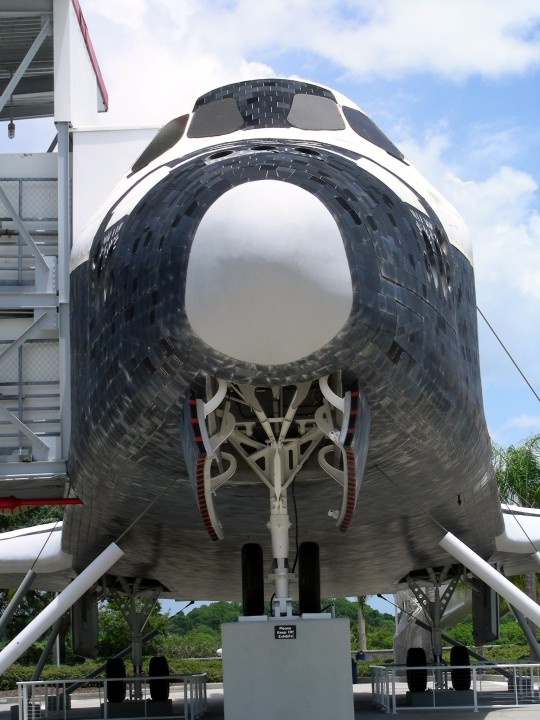


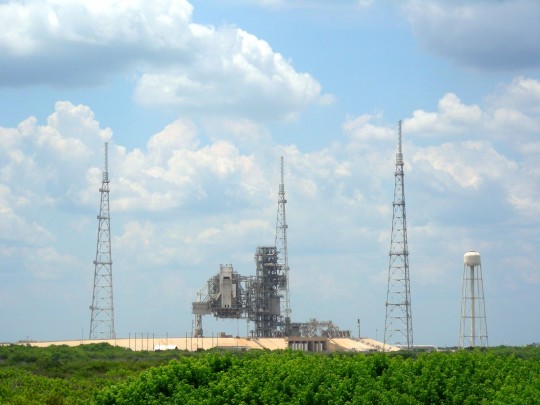
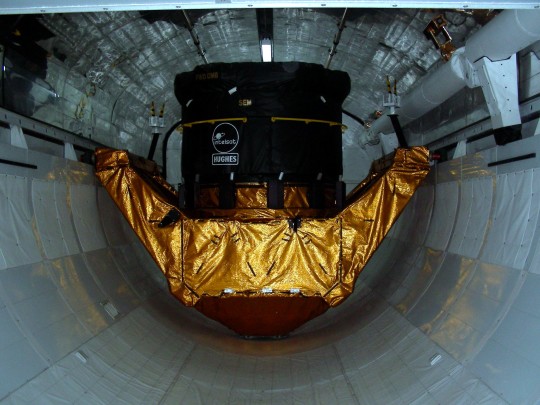
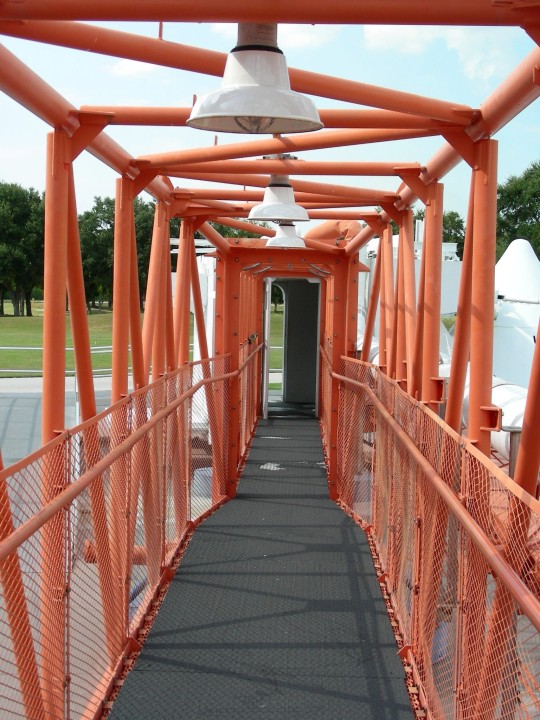

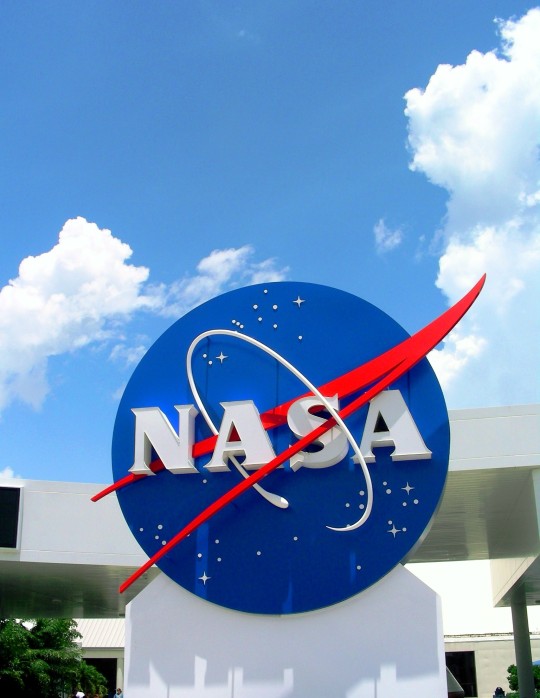






STS-51-L mission: Space Shuttle Challenger exploded after liftoff, killing all seven astronauts on board on January 28, 1986.
#STS-51-L mission#Space Shuttle Challenger#exploded#died#death#USA#28 January 1986#anniversary#US history#Launch Complex 39B (LC-39)#Kennedy Space Center Visitor Complex#NASA#engineering#Florida#travel#National Aeronautics and Space Administration#technology#tourist attraction#landmark#summer 2010#2009#original photography#replica
3 notes
·
View notes
Photo

"Back to the Future" Artemis 1 heading to the Moon from LC-39B, Kennedy Space Center, Florida https://www.darylgilbertphotography.com/Launches-from-the-Space-Coast/Artemis-1 (bij Kennedy Space Center, NASA) https://www.instagram.com/p/ClCYB9uoJ4L/?igshid=NGJjMDIxMWI=
0 notes